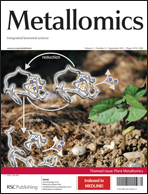Germination and seedling establishment are among the most critical phases in the development of plants, and seed vigour has become an important trait for the selection of robust crop cultivars. Little is known about the potentially limiting role of mineral nutrients in early metabolic and developmental processes during germination. Therefore, we assessed the ionome and relative distribution of mineral elements in different seed and seedling tissues of oilseed rape (Brassica napus L.) and monitored the internal allocation of nutrients during germination. In seeds, cotyledons harboured the main pool of K, P, S, Mg, Fe, Mn and Zn, whereas the seed coat contained most of the Ca, Na, B, Cu and Mo. Although the early root and hypocotyl tissue expanded first, concentrations of most elements were initially low. Re-allocation of elements to the root/hypocotyl tissue from other pools set in two days after seed imbibition and was most rapid for K. Relative to the critical deficiency levels of vegetative tissues, seed tissues were particularly low in B, K and Fe. Further analyses of the ionome of seeds and seedlings, grouped according to their germination efficiency, indicated that in particular low S, Mg and Ca coincided with germination failure. This study documents highly dynamic changes in the ionome of seed and seedling tissues and provides evidence for potentially limiting elements during early germination and seedling establishment in rapeseed.


 Please wait while we load your content...
Please wait while we load your content...